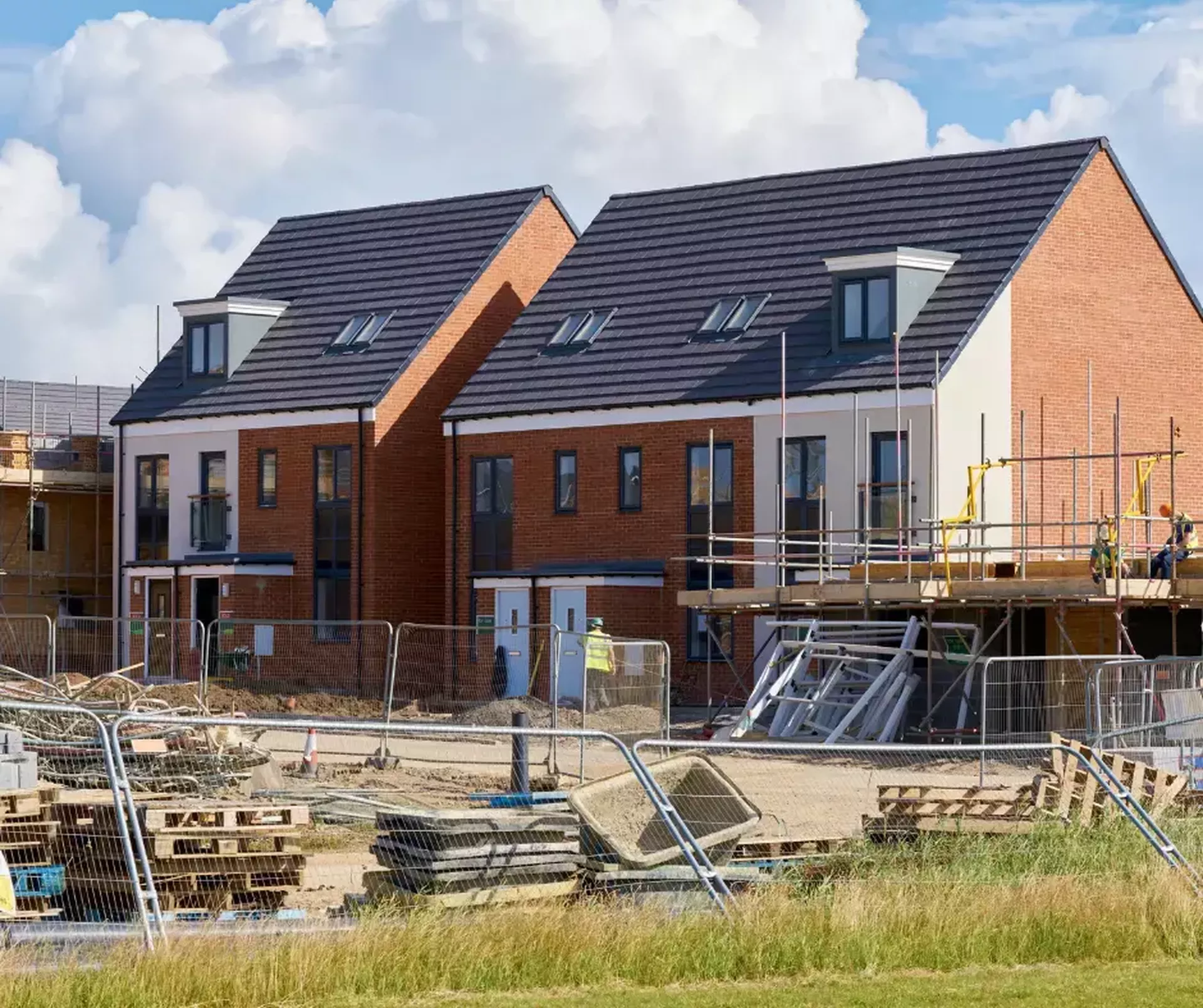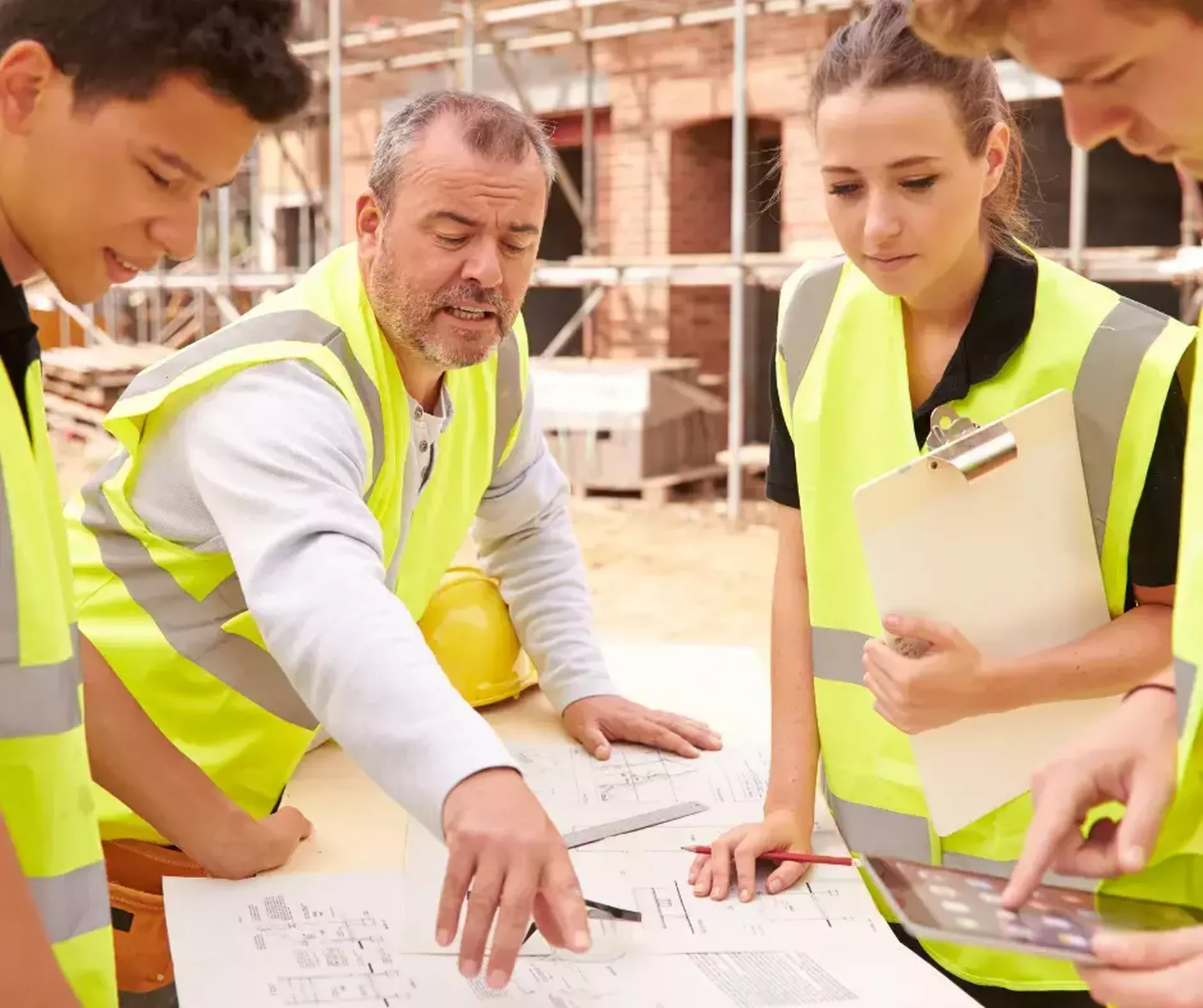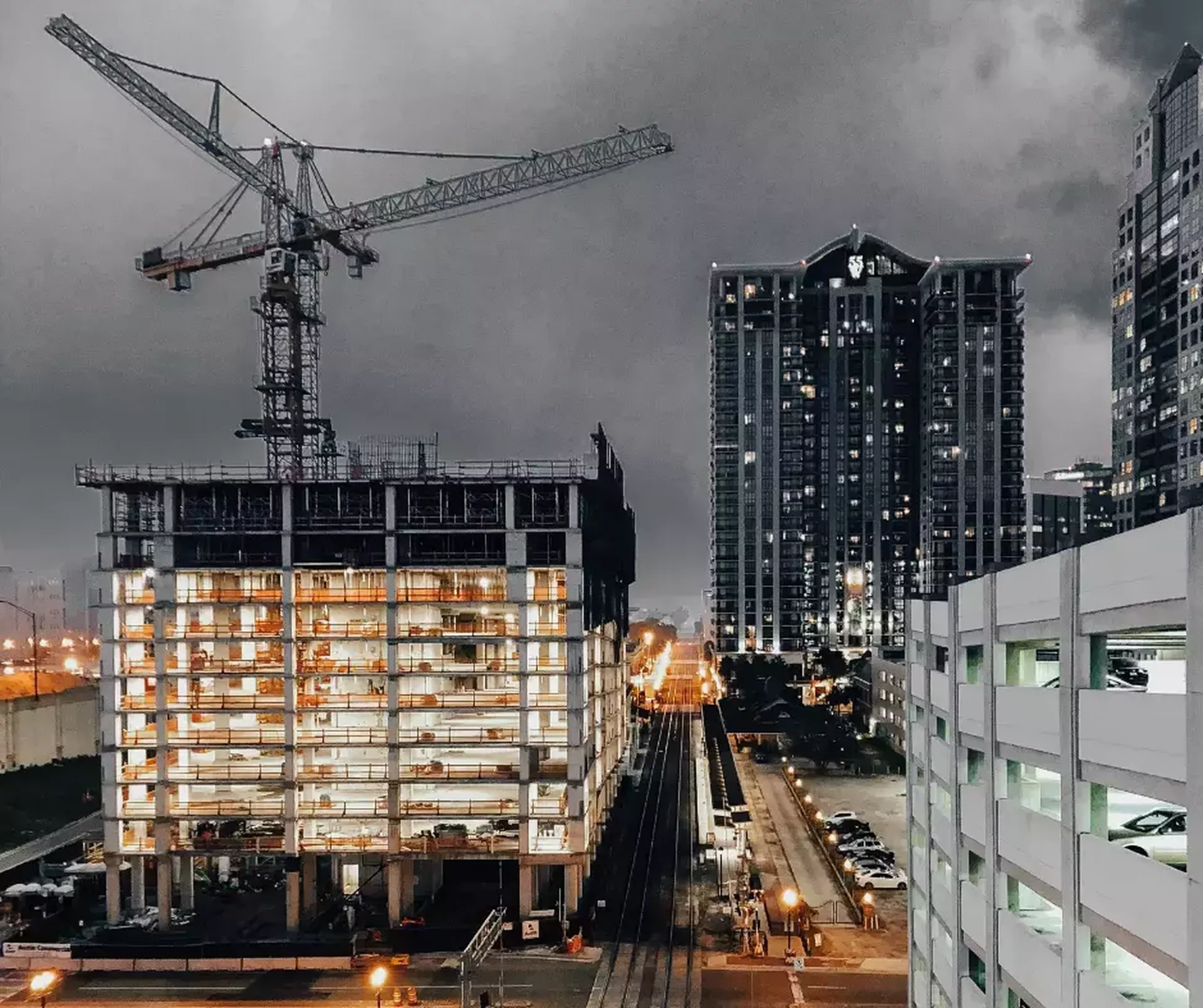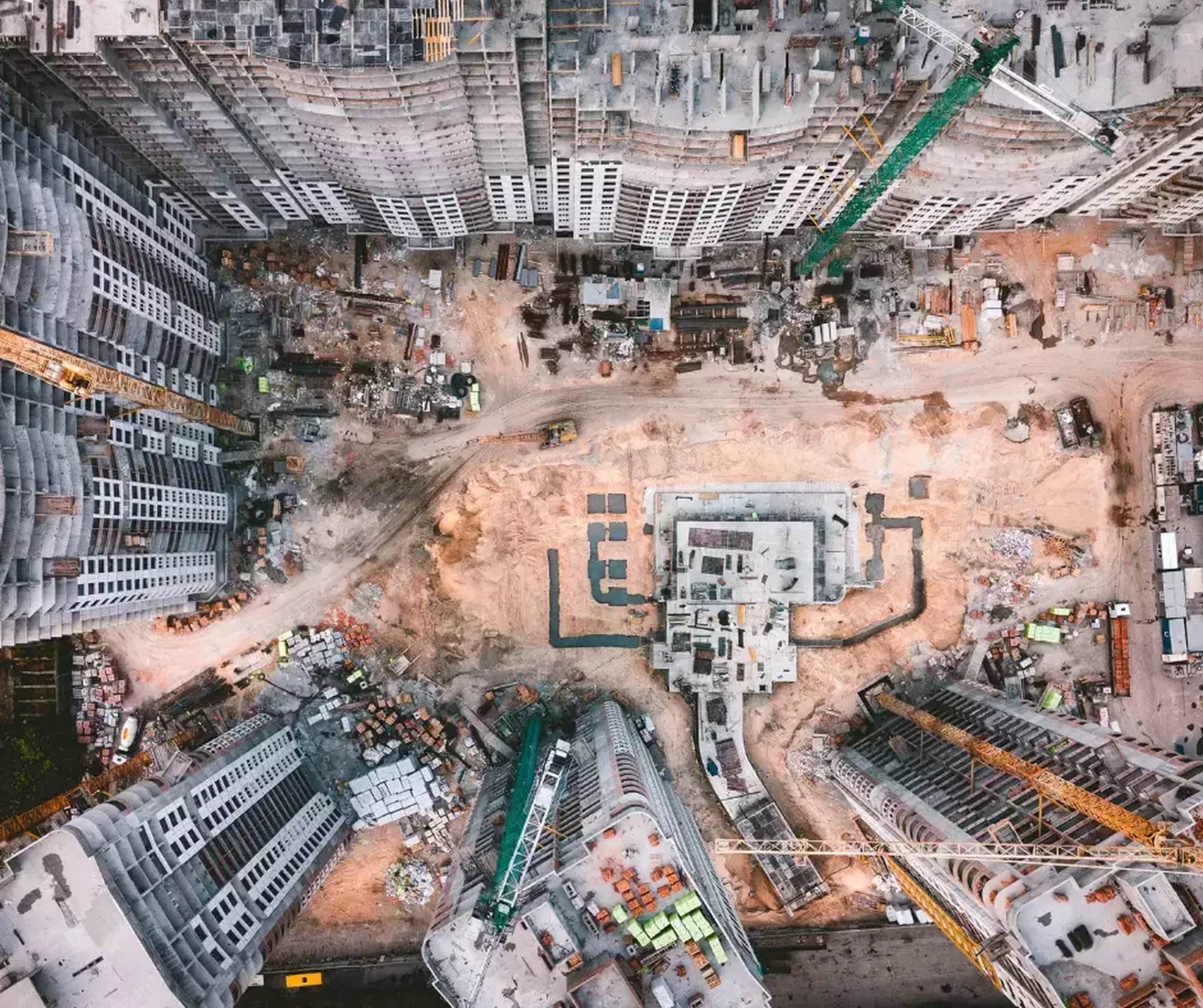10 predictions for UK construction in 2024
By: Liz Male
What can UK construction expect in 2024? We’ve tried to gather together as many good technical policy, economic and innovation predictions as we could find, plus add in our own observations about the construction, building, infrastructure and housing issues most likely to grab the headlines in the year ahead. This is a long read, but here’s our forecast for UK construction in 2024.

10 predictions for UK construction in 2024
- 2024 will be good for those not frozen by election paralysis
- Housing will be a frontline issue
- Economic forecasts are gloomy – but could change fast
- The most important report in 30 years
- Continued focus on people and skills
- Digitalisation meets ESG
- A UK Net Zero Carbon Buildings Standard
- Major changes to public procurement
- The birth of new EPCs
- Getting Great Britain building again
2024 will be good for those not frozen by election paralysis
Construction is vital for the UK economy and touches every part of our lives, shaping the places we call home. It is worth 9% of GDP to the UK economy each year and employs more than 2.6m people.
As the Construction Leadership Council explains in its latest CLC Connect newsletter, “Construction is a busy and fast-changing industry. From new government policies and game-changing private sector initiatives to emerging technologies and innovative ways of working, there’s a lot going on as we strive to grow, improve productivity, attract and retain talent, and successfully transition to Net Zero.”
So don’t expect a quiet year in 2024. Given we are facing a General Election in 2024, our prediction is that construction, housing, engineering and infrastructure, and yes, maybe even retrofit, will become important topics for manifesto pledges and discussion between the parties.
Of course, one common side effect of an election year is the political uncertainty it creates, often leading to more hesitancy and inaction by businesses. It’s like a collective holding of breath.
But while caution by ‘the establishment’ is understandable, now’s also a very good time for the innovators and change-makers to step forward and shape the future.

Housing will be a frontline issue
Renewed pledges to build 300,000 homes a year? Social housing only? Greenbelt or not greenbelt? These, and many other housing and planning questions, are highly likely to become public battlegrounds for election debates.
The Conservatives want local housing targets to be advisory rather than mandatory. Tories believe that housebuilding rates will naturally improve once mortgage rates improve, and they appear to be sticking to the 300,000 homes-a-year pledge in their 2019 manifesto, an ambitious number the country is highly likely to miss (this year’s number was about 120,000).
Labour has already been very open about its intentions to oversee a big boost in affordable and social housing, if it comes to power. It has pledged to build 1.5m homes within the first five years of a Labour government (so the same target of 300,000 homes a year), including new towns delivered by development corporations.
Labour says it would also make it easier for councils to use right-to-buy funds to build new homes, and would allow social landlords to use a greater proportion of the grant funding they receive on buying housing stock which could then be rented out as affordable housing. Labour also has plans to reform stamp duty and the planning system (again).
The Liberal Democrats want to build 150,000 social and council homes a year by the end of the next parliament. They also have in mind +a 10-year programme to insulate homes as well as new standards to ensure new homes are warm, cheap to heat and produce minimal carbon emissions. The Lib Dems also want to create 10 new garden cities to help tackle the housing crisis.
This is what we know so far – but it’s a dead cert that there will be lots more to scrutinise in 2024.

Economic forecasts are gloomy – but could change fast
The latest autumn forecast from the Construction Products Association (CPA) has the headline: “Construction recession set to hit industry until 2025”. Deep joy.
The CPA expects a further fall in construction output of 0.3% in 2024, with a depressed economy holding back any chance of growth in domestic RMI (repair, maintenance and improvement work), newbuild housing and even infrastructure.
“Energy-efficiency retrofit – primarily insulation and solar photovoltaic work – continues to remain strong; however, whilst there are government programmes such as ECO4, the Great British Insulation Scheme and the Boiler Upgrade Scheme in place, there are still questions over their delivery,” says the CPA.
But there are interesting observations, as always, from our client Barbour ABI which has a fantastic overview of new planning applications and projects in the pipeline.
Its figures for planning approvals suggest a relatively stable outlook for demand in 2024. In November, Barbour noticed that residential approvals had bounced back to £3.7bn, significantly stronger than the month before and 3% higher year-on-year, due to large apartment schemes getting the green light.
As Barbour ABI’s consultant economist Kelly Forrest says:
“The good news is the underlying demand for construction remains steady, despite the challenges facing the sector, as the housing crisis continues and other factors such as continued demand for green energy and warehousing play into the sector.
“A decision from the Bank of England to reduce interest rates or a significant decrease in inflation could rapidly swing the pendulum as a result, as could new policies implemented following an election.”
While Halifax is continuing to predict a 2-4% drop in house prices again in 2024, average property prices are almost 19% higher than at the onset of the pandemic.
Recent research from Butterfield Mortgages has also found over a quarter of private landlords in the UK plan to increase their portfolios in 2024, with only 7% planning to sell properties in the new year, despite speculation there will be an exodus from the sector due to market conditions and the implementation of the Renters Reform Bill.

The most important report in 30 years
2024 is expected to be the year that the official Grenfell Tower Inquiry publishes its final report. This Phase 2 report will complete the work to reveal the full story of what happened at Grenfell Tower on 14 June 2017.
Quite apart from its impact on survivors, their families and the wider community, the report is likely also to be devastatingly difficult reading for many parts of the construction industry and its supply chain. The implications of the Inquiry’s findings – and any subsequent prosecutions – will be felt across the whole industry in 2024 and beyond.
Many within the industry know how much has changed since 2017. We now have a new building safety regime (largely) in place – although we should definitely expect another wave of regulatory change in 2024 as the Building Safety Regulator goes into its ‘consolidation’ phase.
For example, from 1 April 2024, building control becomes a regulated profession. The Building Safety Regulator will begin assessing applications for building assessment certificates for higher-risk residential buildings. The regulator will create a national register of higher-risk buildings, providing a searchable portal of higher-risk buildings in England for the first time. A residents’ complaints system will open. A national regulator for construction products is also likely to be established, with increasing emphasis on third-party testing and certification of construction products. Expect over 2,000 changes to NHBC Technical Standards.
We see 2024 as a big year of reputational risk for the industry, unless we work hard to demonstrate the improvements made in the ways we design, procure, construct and manage buildings. There is an important story to be told about how the industry ensures the competence of everyone involved in the process, to ensure the safety and wellbeing of everyone in society.

Continued focus on people and skills
The CLC estimates that over 500,000 UK-born construction workers will retire in the next 10-15 years. This is a significant loss in terms of capacity and experience to the construction sector, particularly in domestic RMI (a very big problem if we need an army of skilled trades to complete that retrofit work so urgently needed).
It’s certain then that 2024 will be another year of focus on how we attract and retain talent within the industry. We predict a significant boost for industry-backed schemes like Talentview Construction in 2024.
Expect the findings of the Mark Farmer-led review of CITB and EITB to be published in 2024. A call for evidence was completed in summer 2023, looking at the training levy and how it is currently used to improve skills and training in construction and engineering. Recommendations on the future role of these industry training boards are currently being considered by the government.
The end of ‘grandfather rights’ means that about 60,000 construction workers will need to have achieved formal accreditations and qualifications by the end of 2024 if they wish to retain their CSCS cards.
Look out too for the radical changes happening in architectural education, including the Architects’ Registration Board’s introduction of new mandatory CPD for all registered architects in the UK.




Digitalisation meets ESG
One particularly interesting development in 2024 will be the launch of new digital solutions for measuring, reducing and mitigating construction’s carbon footprint.
A 2023 report from the RICS on digitalisation noted there is “an increasing emphasis on sustainability and environmental considerations for firms implementing digitalisation strategies in the construction domain. Considering the growing urgency surrounding climate change, companies face mounting pressure to minimise their carbon footprint and adopt sustainable practices.”
We have noticed that too. One exciting development to watch out for in 2024 is the launch of Causeway Technologies’ solution to help contractors and suppliers looking to work together to measure Scope 3 emissions more easily and accurately.
We also predict the increasing use and importance of the new Built Environment Carbon Database, created to become the main source of carbon estimating and benchmarking for the UK construction sector and a practical instrument to support the decarbonisation of the built environment.
A UK Net Zero Carbon Buildings Standard
A coalition of BBP, BRE, the Carbon Trust, CIBSE, IStructE, LETI, RIBA, RICS, and UKGBC has been working to create the UK's first cross-industry, science-based Net Zero Carbon Buildings Standard that brings together all the net zero carbon requirements for all major building types (new buildings, existing buildings and retrofits), based on a 1.5°C trajectory.
It looks like a beta version of the standard will be available for testing in spring 2024.
This could be a game-changer in terms of providing a consistent approach to assessing whether a building can be defined as ‘net zero carbon’, which can then be used as the basis for verification by other independent bodies, and could be incorporated into tools.
Keep an eye out too for new rules on biodiversity net gain and sustainable urban drainage, applying to new developments in England from 2024, and a very promising outlook for the use of more wood in UK construction, thanks to the government’s Timber in Construction roadmap.

Major changes to public procurement
Following the passing of the Procurement Act (which applies in England, Wales and Northern Ireland), a wave of secondary legislation is expected in 2024 with a minimum of six months’ notice before ‘go-live’, which we anticipate will be October 2024.
The Act was introduced to establish a new procurement regime post-Brexit. It provides for simpler procurement processes to support small businesses and innovation and represents one of the largest shakeups to procurement rules in UK history. It is designed to deliver simpler, more effective public sector procurement, and help SMEs secure a greater share of approximately £300bn of government spending every year.
Throughout 2024 the Cabinet Office and others are running webinars, ‘knowledge drop’ guidance sessions and alerts. This is definitely one topic to track if you are keen to get more work in the public sector.
The birth of new EPCs
Proposals for a new national calculation methodology for the energy efficiency of buildings – the so-called Home Energy Model – may sound geeky.
But we predict that this area of technical innovation could hold important implications for the future of EPCs (energy performance certificates) and the way we talk and make decisions about the buildings we live in.
Alongside the Future Homes and Buildings Standards consultation which runs until March 2024, this is the first complete overhaul of the 30-year-old SAP energy efficiency calculation methodology. The Home Energy Model will be, in effect, the new software engine that models the physics and energy performance of a home.
New types of testing the actual performance of buildings will be identified in 2024, and there is also talk of a new badge and accreditation scheme for builders who can prove, through testing, that their homes meet the Future Homes Standard from 2025.
We predict progress at last in 2024 to implement the government’s EPC Action Plan, and to change EPCs to reflect what Elmhurst Energy calls the ‘3 Cs’ – cost, (energy) consumption and carbon. Look out in January for the useful Almanac that Elmhurst produces every year.
From energy assessors and building physics consultants to estate agents, chartered surveyors, mortgage lenders and landlords, these are all developments to watch in 2024.
Getting Great Britain building again
Finally, let’s take a quick peek at infrastructure.
“We have got to build more wind farms, roads, reservoirs, and railways to connect people to opportunity, drive productivity and prosperity, meet the challenge of climate change, and forge a dynamic growing economy in every part of the UK,” says the introduction to the government’s policy paper on speeding up infrastructure delivery, published in November 2023.
Yet, our prediction is that big civil engineering projects are not on the cards for 2024 – instead, expect much more term contracts focusing on repairs and maintenance.
One definite activity is a review into “unnecessary delays” in planning and the role of statutory consultees, headed by Sam Ricard, chief executive of Britain Remade. There are also plans for reforms to change the planning process for national infrastructure, aiming to cut up to five months off the consenting process for Nationally Significant Infrastructure Projects.
There is also a 3-month rapid review in 2024 to explore how to increase productivity in the construction industry and how to speed up consultation and delivery of projects, including whether 24/7 working should be applied to more large infrastructure projects in the UK.
That review will look at onsite working practices and new technologies, reducing waste and error, which are the big causes of delays and costs, as well as looking at how to encourage greater collaboration. The review will assess if 24/7 working should be applied to a broader range of projects, how it would impact costs, how noise impacts could be minimised in residential areas, and what we can learn from other countries.
There are clearly opportunities for innovators in this market in 2024.

Do you have a project you want to talk to us about?
LMC is a PR and communications consultancy on a mission to help our clients change the construction, property and built environment sectors for the better.
Using our specialist knowledge and skills, we help clients to achieve their change agenda, building their reputation and profile around the topics that matter most.
If you need help to meet your ambitions and make a difference, please get in touch for an informal discussion about how we can help.